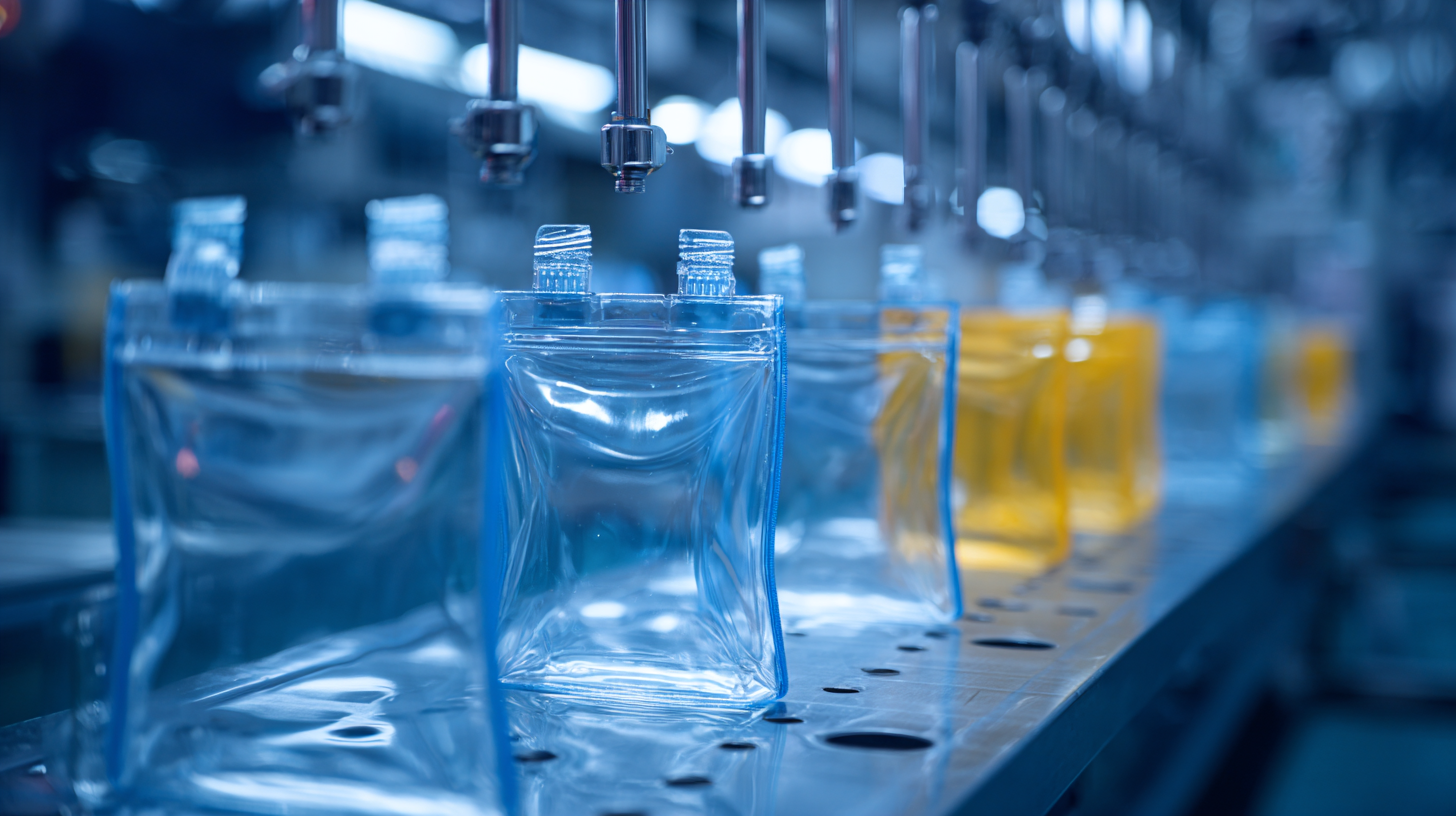
Blog
Top Strategies for Choosing the Best Plastic Packaging Solutions
In the rapidly evolving landscape of manufacturing and retail, choosing the best plastic packaging solutions has never been more critical. According to a study by Grand View Research, the global plastic packaging market is expected to reach USD 1 trillion by 2024, driven by the growing demand for lightweight and durable packaging in various sectors, including food, pharmaceuticals, and consumer goods. With the rise of sustainability concerns, companies are now looking for innovative solutions that not only meet their operational needs but also align with eco-friendly practices. As highlighted in the latest Plastics Industry Association report, advancements in technology and materials are enabling manufacturers to produce high-quality plastic packaging that balances functionality, cost-effectiveness, and environmental responsibility. In this blog, we will explore top strategies for selecting the most effective plastic packaging solutions, derived from China’s leading factories, which are synonymous with strength and trust on a global scale.

Essential Factors to Assess When Selecting Plastic Packaging Options
When selecting plastic packaging solutions, several essential factors must be considered to ensure optimal performance and sustainability. The global FMCG packaging market is expected to reach
$134.08 billion by 2032, showcasing a significant shift towards efficient packaging types, including flexible plastic, glass, and paper-based solutions. Each packaging type offers unique advantages; for instance, flexible plastic packaging is lauded for its lightweight properties and cost-effectiveness, making it ideal for food and beverage applications.
Moreover, the recycling potential of the materials used is crucial. The recycled plastics market is projected to grow significantly, driven by materials like
polyethylene terephthalate (PET), high-density polyethylene (HDPE), and polypropylene (PP). Understanding the lifecycle of these materials, from their source to end-of-life, plays a vital role in selecting packaging that not only meets consumer needs but also adheres to increasing environmental standards. Companies must assess not just the aesthetic appeal and shelf life conferred by various packaging options, but also their sustainability profile, as consumers become increasingly aware of the environmental impact of their packaging choices.
Key Considerations for Sustainability in Plastic Packaging Choices
When selecting plastic packaging solutions, sustainability should be a fundamental consideration for businesses aiming to minimize their environmental impact. One key factor is the choice of materials. Opting for recycled plastics not only reduces waste but also decreases the demand for virgin resources.  Moreover, businesses can explore biodegradable alternatives that break down more easily in the environment, thereby lessening long-term pollution. Understanding the life cycle of the materials used in packaging can help decision-makers assess the true environmental footprint of their choices.
Moreover, businesses can explore biodegradable alternatives that break down more easily in the environment, thereby lessening long-term pollution. Understanding the life cycle of the materials used in packaging can help decision-makers assess the true environmental footprint of their choices.
Another important aspect is the packaging's design and functionality. Efficient packaging minimizes material use while ensuring product protection, which can lead to reduced overall plastic usage. Companies should also consider end-of-life strategies, such as reusable or refillable options, which can significantly lower waste generation. Additionally, collaborating with suppliers who prioritize sustainability and adhere to eco-friendly practices can enhance a company's commitment to responsible packaging solutions. By implementing these key considerations, businesses can contribute to a more sustainable future while also engaging environmentally conscious consumers.
Comparing Costs: Budgeting for the Best Plastic Packaging Solutions
When it comes to selecting the best plastic packaging solutions, understanding and comparing costs is crucial for effective budgeting. According to a report by Smithers Pira, the global plastic packaging market is projected to reach $1 trillion by 2024, highlighting the growing demand and competitive pricing strategies in the industry. It’s essential to analyze the cost of various materials, including polyethylenes and polypropylenes, which have different price points and environmental impacts.
Tip: Consider the total cost of ownership, which includes not just the purchase price but also transportation, storage, and end-of-life disposal costs. This comprehensive view can significantly influence your choice of packaging and budget allocation.
Furthermore, differentiating between custom packaging solutions and standard options can lead to substantial savings. Research indicates that custom packaging can sometimes reduce material waste by up to 30%, directly impacting your bottom line.
Tip: Engage in discussions with suppliers about pricing models and negotiate terms that align with your budget and sustainability goals. Keeping open lines of communication can lead to discovering cost-effective options tailored to your needs.

Understanding the Regulatory Requirements for Plastic Packaging
When selecting the best plastic packaging solutions, understanding the regulatory requirements is a crucial step that cannot be overlooked. Different regions have specific regulations governing the use of plastics in packaging, particularly regarding safety, environmental impact, and recyclability. For instance, in the European Union, the Plastics Strategy mandates stringent guidelines aimed at reducing plastic waste and promoting reusable and recyclable materials. Businesses must stay informed about these regulations to avoid penalties and ensure compliance.
Additionally, it is essential to consider the end-of-life implications of the chosen plastic packaging. Regulations often require that packaging materials not only be safe for consumers but also have a minimal ecological footprint. This includes understanding the classifications of plastic materials and their recyclability. Companies should prioritize materials that align with both regulatory standards and sustainability goals. By proactively addressing these regulatory requirements, businesses can not only comply with the law but also enhance their brand reputation and appeal to environmentally conscious consumers.
Top Strategies for Choosing the Best Plastic Packaging Solutions - Understanding the Regulatory Requirements for Plastic Packaging
| Strategy | Considerations | Regulatory Compliance | Sustainability |
|---|---|---|---|
| Material Selection | Choose materials based on strength, weight, and permeability. | Must comply with FDA or EU regulations for food contact materials. | Opt for recyclable or biodegradable materials. |
| Design and Functionality | Focus on user-friendliness and protection of contents. | Packaging must meet labeling requirements. | Design for reuse and minimize waste. |
| Supply Chain Considerations | Evaluate logistics, shelf-life, and transportation costs. | Adhere to international shipping regulations and safety standards. | Source materials locally to reduce carbon footprint. |
| Cost Analysis | Assess total cost of ownership, including production and disposal. | Ensure that pricing aligns with compliance costs. | Consider long-term savings from sustainable practices. |
| Consumer Preferences | Research market trends and consumer behavior. | Stay informed on consumer rights and packaging claims. | Offer transparent information about material sourcing. |
Evaluating the Impact of Packaging on Product Shelf Life and Quality
When it comes to selecting the ideal plastic packaging solutions, understanding the impact of packaging on product shelf life and quality is crucial. The right packaging not only protects the product but also influences its longevity and freshness. For example, materials with barrier properties can effectively shield products from moisture, light, and oxygen, all of which can lead to spoilage. Companies must evaluate the specific needs of their products, such as whether they are perishable or sensitive to environmental factors, to choose appropriate packaging that ensures quality preservation.
Moreover, the design of the packaging plays a significant role in maintaining product integrity. Innovations in plastic packaging, such as resealable features, can enhance usability while extending shelf life by preventing exposure to air and contaminants after initial opening. It is also essential to consider how packaging interacts with the product itself, as certain plastics may leach chemicals that affect flavor or safety. By prioritizing these factors, businesses can make informed decisions that not only improve product shelf life but also enhance overall consumer experience and satisfaction.
